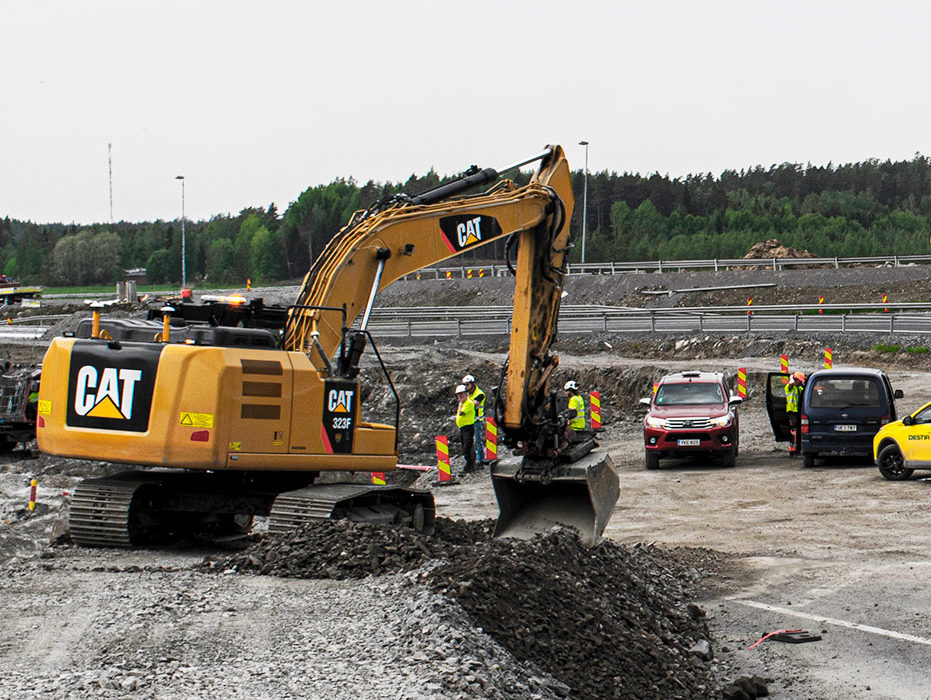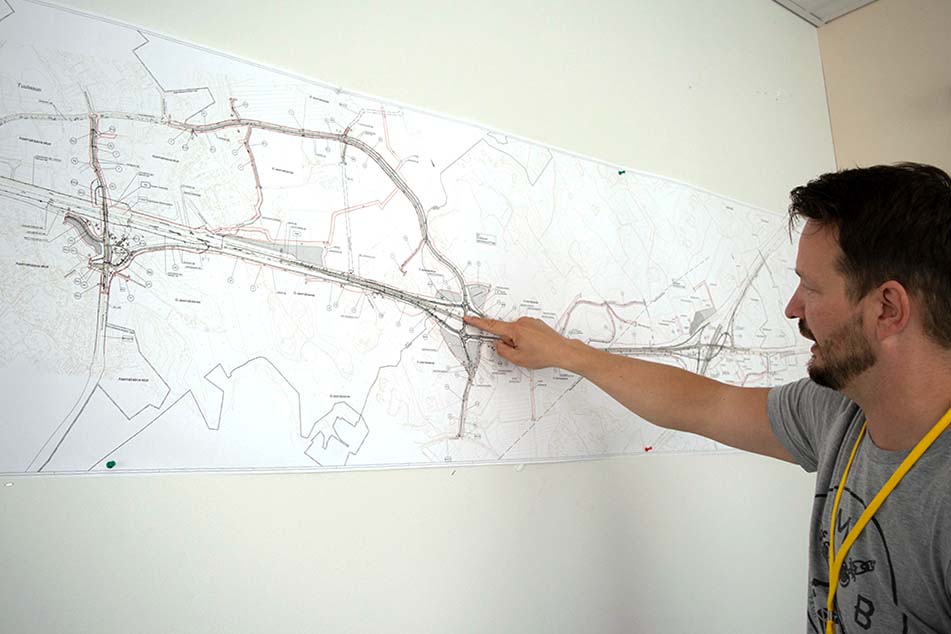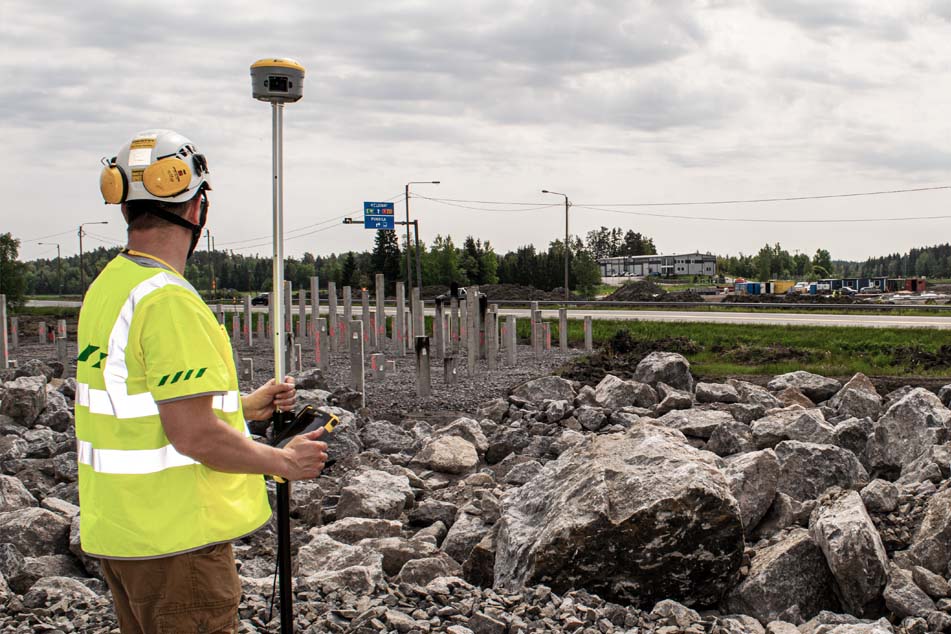more efficiency by model-based construction
Improving road safety and traffic flow through model-based construction
In Finland, the last 16 kilometers from Helsinki to Turku on the E18 highway look very different due to the ongoing ring road improvement project. The project is implemented as a model-based production. As a result, the traffic safety and flow of one of Finland’s most important logistics business routes will be significantly improved. Xsite® machine control system is used in the project to facilitate operator’s work and information flow.
The nearly 2,000-kilometer-long European route runs from St. Petersburg in Russia to Northern Ireland passing through Finland, Sweden, Norway, and Scotland. In Finland, the road runs from Vaalimaa to Naantali including the Kausela-Kirismäki section on the Turku ring road. This section is vital for the south-west coast transport system, business, local residents, and the logistics of Southern Finland. The already busy road section is burdened by truck traffic to the harbors of Turku, Raisio and Naantali.
The first phase of the two-phase project is to improve traffic safety and flow by changing part of the road from two-lane to four-lane road. In addition, interchanges will be built and improved. The construction work of the first phase began in March 2019 by Destia Ltd and will be completed by 2021.

Model-based production from planning to implementation
The improvement of the ring road will be carried out entirely using openBIM workflow, which is nothing new to Destia that has been piloting model-based production in Finland for years. According to Ville Suntio, Project Lead Designer, model-based production is the only way to operate on-site. Suntio is responsible for the design and provides information to the site manager and design manager.
“Using model-based production has nothing to do with age or the amount of work experience. The most striking benefit of model-based production is that information is more diverse, and the progress of the project can be monitored in real time,” Suntio says.
The project follows the Common InfraBIM Requirements which support model-based production and include, for example, a folder structure that facilitates information storing and retrieval on large construction sites.
“When every project follows the same folder structure, everyone knows where to look for a certain file,” explains Tero Maijala, Surveying Manager at Destia.

Machine control system speeds up project phases
All plans are made in XML format. After the designer has prepared them, they are forwarded to Maijala and the automation operator for inspection.
“If the plans have been triangulated, then all we have to do is check them. If they are not, then we triangle them with 3D-Win software,” Maijala explains.
Once the plans have been exported to the cloud service, they are automatically uploaded to the excavator’s machine control system from which the driver can easily select the model they need. Out of the 11 excavators in the project, ten of them are equipped with the Xsite PRO 3D machine control system.
“It is a requirement for the machines in the project. Especially at the Kirismäki overbridge, machine control is a great advantage, since the excavation will be done in eight meters deep,” Maijala says.
Other phases include mass replacements, surface leveling, and the making of substructures. Without model-based production and machine control, these phases would take longer to complete.
Xsite PRO 3D and Xsite PAD facilitate surveyors and managers’ work
Using the Xsite PRO 3D system facilitates the work on the site in many ways. Firstly, information management becomes easy and efficient. The system includes a project directory in accordance with the Common InfraBIM Requirements which allows the machine driver to find the right models easily and quickly. Also, any changes made to plans will be automatically updated in the driver’s system without format conversion.
“Fragmented data slows down surveyor’s work if they need to modify and combine it. When using Xsite, there is no such problem, because the information can be used as such,” Maijala states.
In addition to excavator systems, surveyors and managers can use a tablet designed especially for them – the Xsite PAD. It can be used, for example, to monitor the progress of the site in real-time and to measure control points for machine drivers.

The Xsite PAD also enables continuous communication between the office and the site. With the Xsite PAD, surveyors and work management have access to the same models as machine drivers. The built-in Infrakit integration ensures a smooth flow of information from the site to the office.
“If we notice that a model is missing, we simply need to call the office and they can upload it to the Infrakit service. After that we can get back to work right away without leaving the site,” Maijala says.
Interested in facilitating your project with the Xsite machine control system? Read More!
